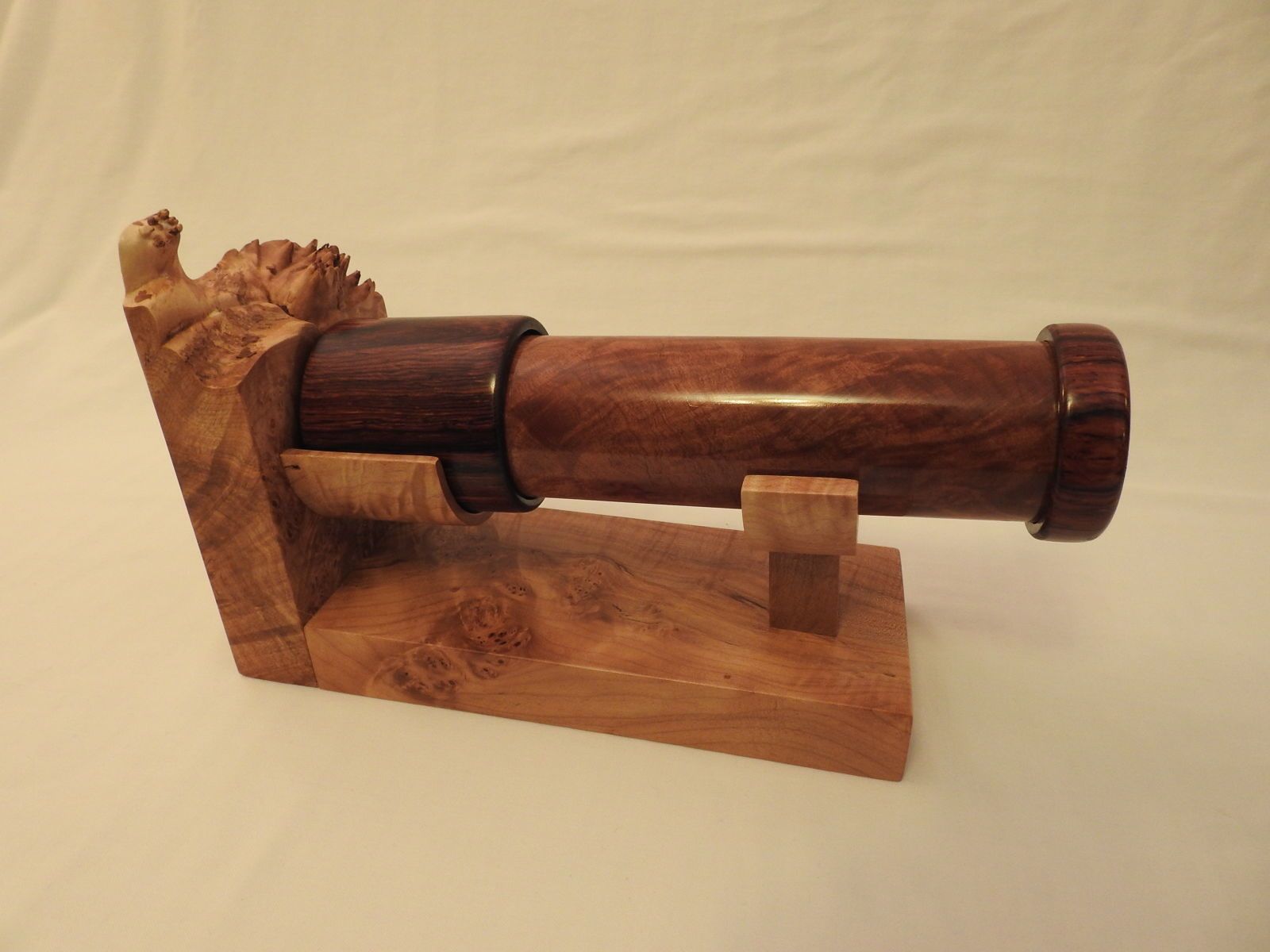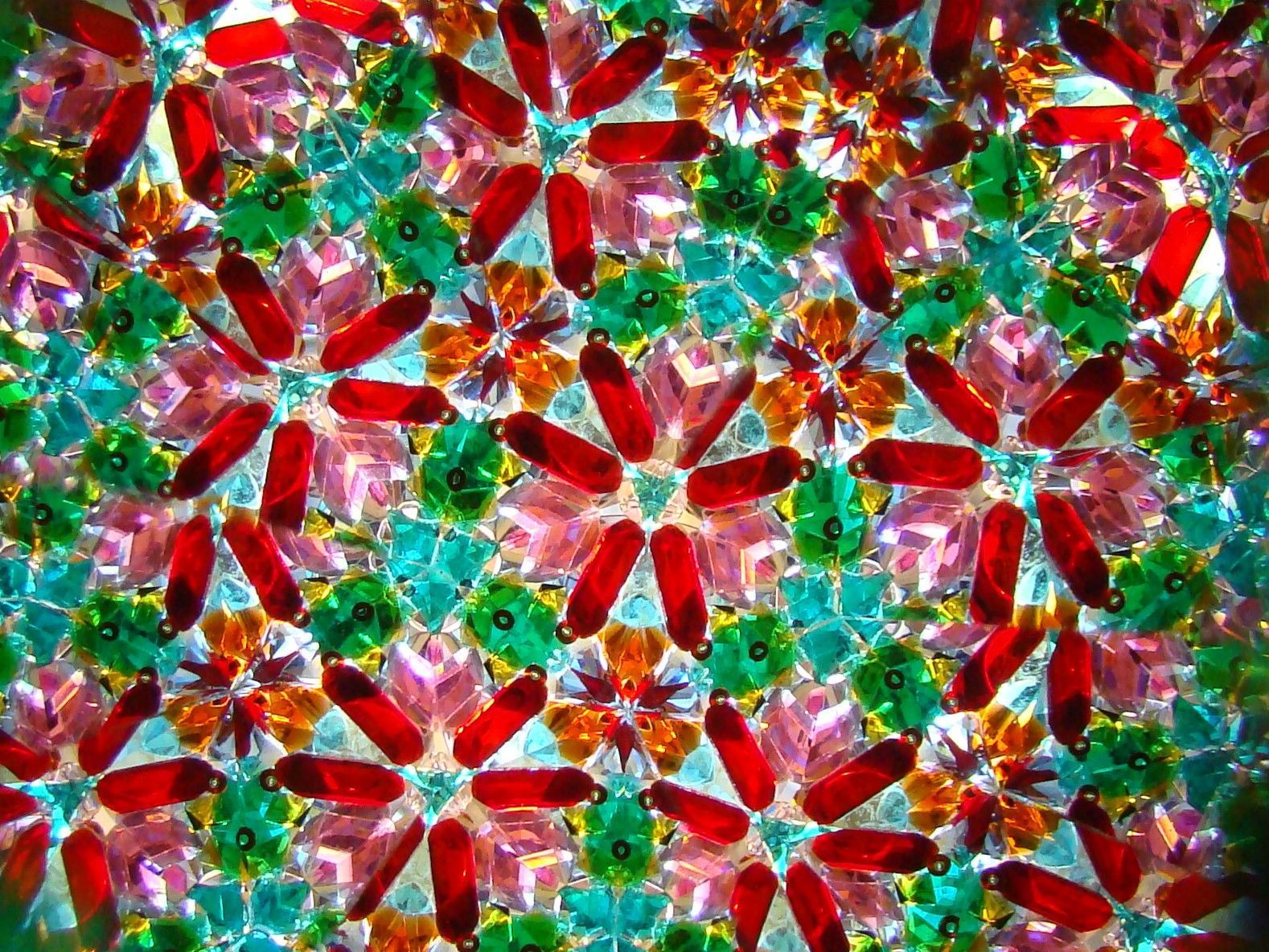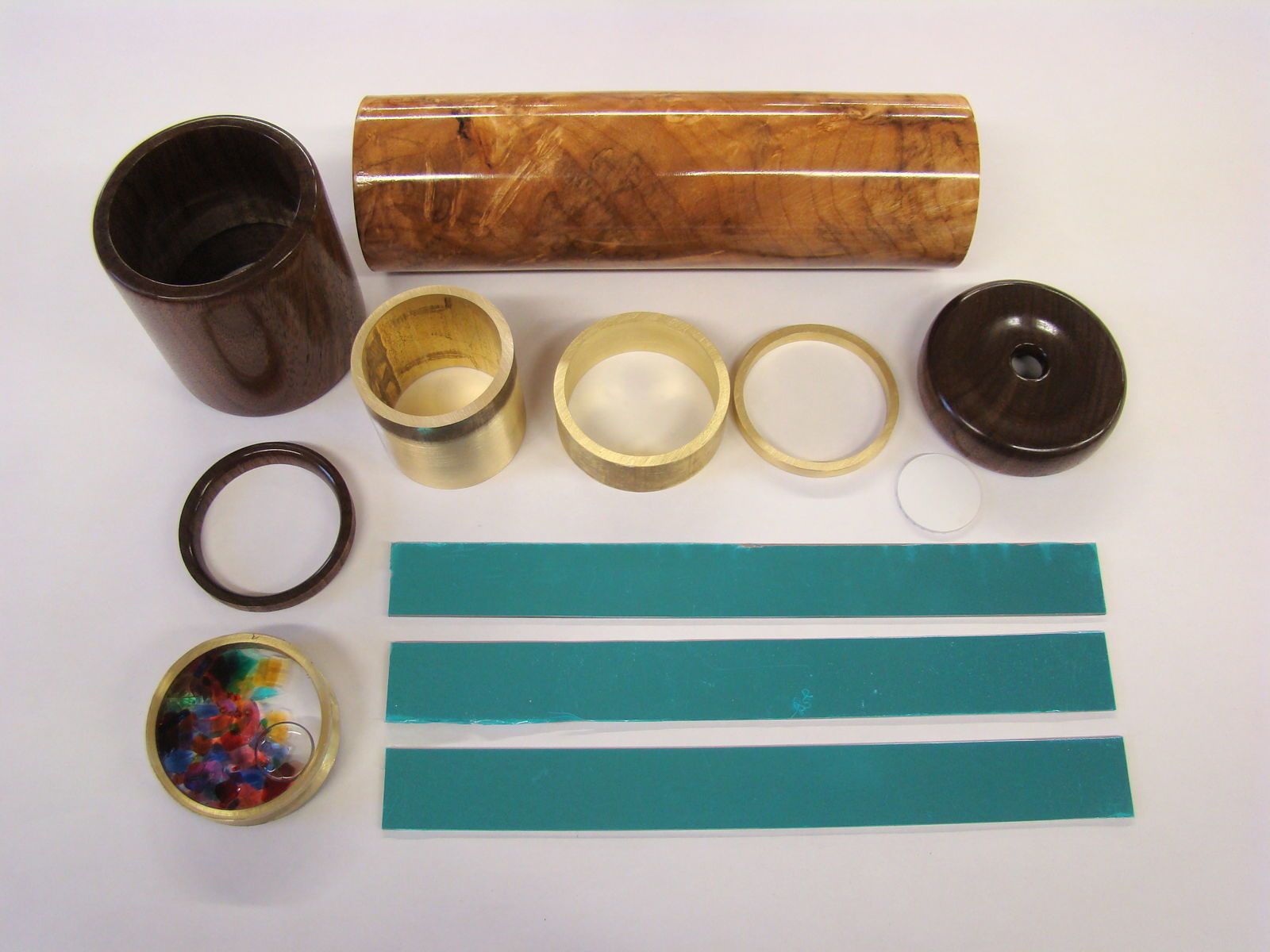Kaleidoscope with Rotating Object Chamber
The kaleidoscope has fascinated people of all ages since invented by Australian Sir Robert Brewster in 1816. He was doing experiments in light polarization and discovered the symmetrical geometric patterns created by looking at objects through a scope of mirrors. The scope is created by narrow strips of mirrors with their long edges adjacent to each other. The objects are usually colored glass beads in a small chamber.
Woodturning kits are available for making kaleidoscopes. Kits usually involve creating a cylinder out of wood to hold the mirrors and using supplied parts for the eyepiece and object chamber. These scopes are created using an original design by the author to create a kaleidoscope using primarily wood and brass components.
Thinned-walled wood cylinders are subject to deformation and warping over time due to stress relief and moisture changes. So using concentric wood rings with minimal clearance is not a practical solution to allow an object chamber to rotate about a scope of mirrors. In this design, two brass concentric rings are used to hold the wood components round so the object chamber can freely rotate. A third ring is used as a stop to hold the outer ring in place.





















Log in or create an account to post a comment.
Sign up Log in